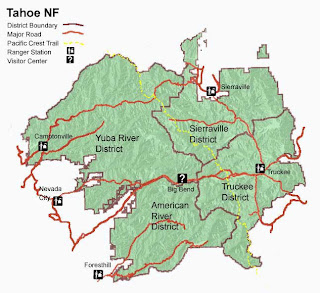In each November/December issue, WildBird subscribers have the chance to crown one of their peers as Birder of the Year. The candidates appear as Forum Birders and Backyard Birders in each issue through the year. The contest is open to everyone who responds to the questions posed in Birder's Back Yard and Lister's Forum. See pages 23 and 27 in the March/April issue for the current questions.
 As 2008 Birder of the Year, Connie Kogler of Loveland, Colo., will receive a Swarovski 8x32 EL binocular and an expenses-paid five-day trip for two to Costa Rica with Swarovski and WildBird hosts. She previously received a Swarovski squall jacket as well as "The Songs of Wild Birds" by Lang Elliott and the fifth edition of "Peterson Field Guide to the Birds of North America," provided by Houghton Mifflin when Connie was named Backyard Birder in the November/December 2007 issue. This year's prizes always appear in the Birder's Back Yard and Lister's Forum departments in each issue.Date and place of birth
As 2008 Birder of the Year, Connie Kogler of Loveland, Colo., will receive a Swarovski 8x32 EL binocular and an expenses-paid five-day trip for two to Costa Rica with Swarovski and WildBird hosts. She previously received a Swarovski squall jacket as well as "The Songs of Wild Birds" by Lang Elliott and the fifth edition of "Peterson Field Guide to the Birds of North America," provided by Houghton Mifflin when Connie was named Backyard Birder in the November/December 2007 issue. This year's prizes always appear in the Birder's Back Yard and Lister's Forum departments in each issue.Date and place of birth: June 24, 1960, in Hartford, Conn.
Home: Loveland, Colo.
Occupations: full-time mother; part-time education coordinator at Wild Birds Unlimited in Fort Collins
Educational background: eclectic, with a focus on animal behavior
Marital status: very happily married
Children: We have a blended family of 11 (three boys, eight girls), ages 11 to 28.
Favorite time of day: before dawn, when the sky is blue-black and you can see the outline of the magnificent Plains Cottonwood against the sky
Favorite authors: Don Miller, Pete Dunne
Favorite books: "
Blue Like Jazz" and "
Pete Dunne's Essential Field Guide Companion"
Favorite nonbirding magazine: "
Outside"
Favorite movie: "
The Princess Bride"
Favorite television show: "
The Life Of Birds" with David Attenborough.
Favorite website:
Colorado Field Ornithologists Colorado County BirdingNonbirding hobbies: dog clicker training and showing, photography, hiking with my husband in the Rockies, writing, native plant gardening, building backyard habitat
Pet peeve: people not being on time
Most prized possession: life
Favorite famous quote: "Insanity: doing the same thing over and over again and expecting different results." ~Albert Einstein
BIRDING CAREER
Year you started birding: 1972
Who got you started in birding: A sweet gray-haired lady whose name I wish I could remember! She had a free-flying parakeet in her camper. She introduced me to the birds of the desert. We were camped in our buses at the Arizona-Sonora Desert Museum campground in Tucson in 1972.
Number of birds on current life list: 350
Number of North American birds on life list: 345
Other lists you keep: state and county lists and, of course, a yard list
Most memorable sighting: Rhinoceros Auklet on the Kenai Fjords Tour in Kenai, Alaska, in 2004
Rarest bird on your list: Streak-backed Oriole in my back yard
Hardest-to-get bird on your list: White-tailed Ptarmigan
Most unusual backyard bird: again, Streak-backed Oriole. Hands down!
Favorite feeder and food: Wild Birds Unlimited Eco-Tough Catch-a-Seed Tray with leg kit or on a pole; WBU's No-Mess Harvest, with a dash of millet and a sprinkling of mealworms. Yum.
Greatest birding adventure: hiking into Colorado's San Juan Mountains for the White-tailed Ptarmigan
Birding idol: Tony Leukering
Favorite conservation organization:
National Wildlife FederationFavorite birding companion: my -- ahem -- older sister, Lauren Burke
Favorite place to bird: my back yard; otherwise, mountain riparian areas
Favorite binocular: Eagle Optics Ranger SRT 8x42
Favorite field guide: "
The Sibley Guide to Birds" (The new Peterson guide is a close second. Wow!)
Most valuable birding references in your library: "
National Geographic Complete Birds of North America" and
Birds of North America Online
Most memorable birding moment: seeing the Tropical Parula in Fort Collins, Colo., after driving 300 miles with a friend. (Before moving to Loveland, I lived 300 miles west in Montrose, Colo.)
Short-term goals in birding: Get out there and bird; take Cornell Lab of Ornithology's "
Home Study Course in Bird Biology"
Long-term goals in birding: keep improving my skills, and share the passion with others
Why you enjoy watching birds: They're so captivating. You never know what you are going to see or what they might do. Birds show the incredible diversity and creativity of my God, and I think they show a fun side, too. The individual adaptations that birds have to their environments are amazing, and I can't seem to get enough of them.
Advice for birders: Take your time getting know your local birds. Enjoy the present. It's always good to pay attention to bird behavior, even with European Starlings and House Sparrows. Mentor a young birder, and have patience with the newbies. Listen to the stories of old-timers; you're gonna be one some day. Share the good ones, and always close the gate.
Labels: Birder of the Year, contest, Costa Rica
The fake bird, moving on model train tracks, allows the team to get a close-up view of the male's mating habits.














